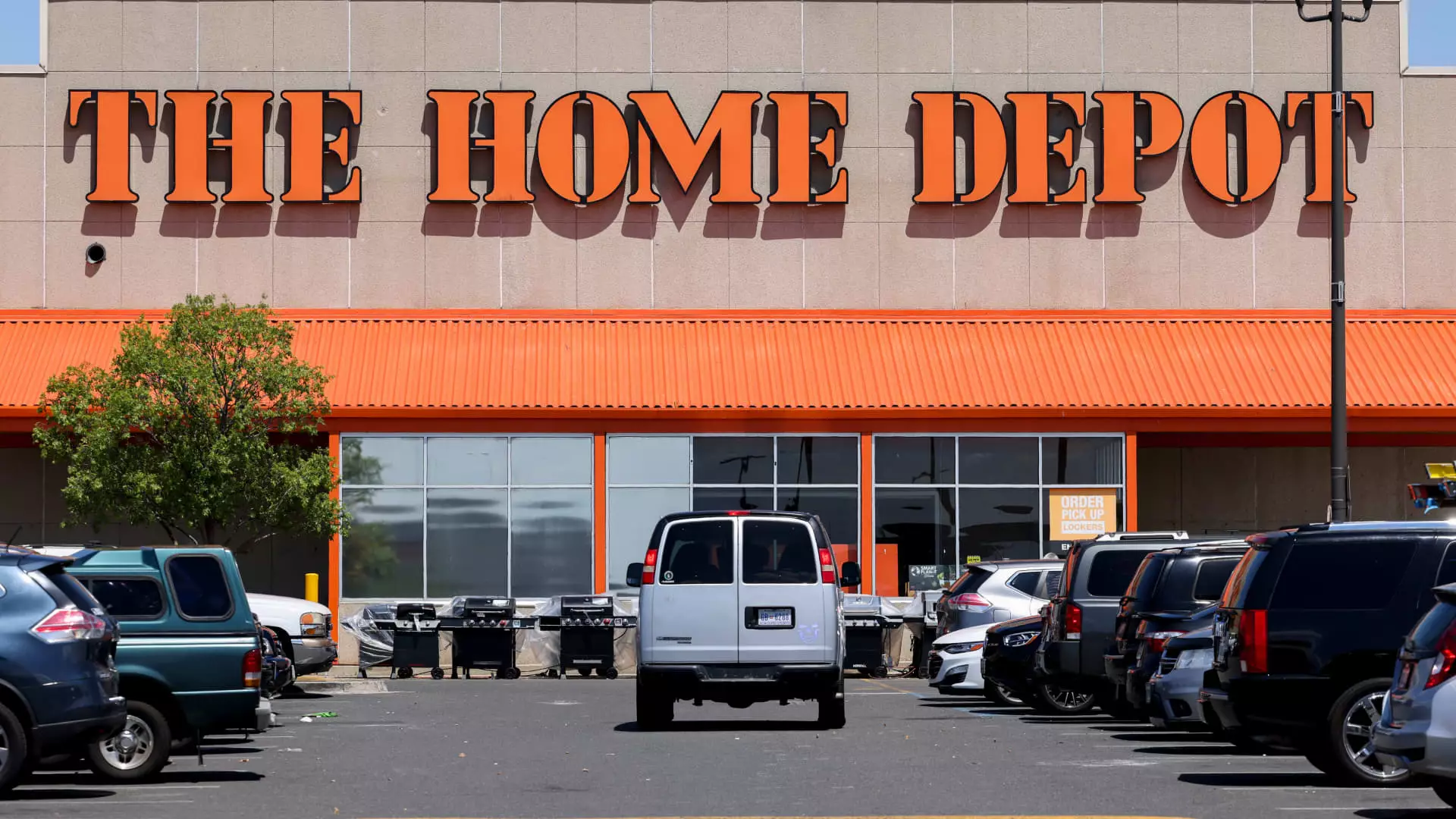Home Depot has faced a uniquely challenging landscape in 2024, characterized by high interest rates and consumer caution. However, as the year drew to a close, numerous indications suggested that the company could experience a meaningful recovery in 2025. This optimistic outlook points towards an anticipated uplift in housing turnover and a resurgence in the appetite for home improvement projects—both critical areas that Home Depot thrives in.
The journey through 2024 for Home Depot has resembled a rollercoaster, with significant fluctuations prompting investors to recalibrate their expectations. The initial phase of the year was particularly slow, attributed largely to high borrowing costs that discouraged homeowners from embarking on substantial renovation projects. As a result, the company’s stock price remained subdued, reflecting the broader market sentiment.
However, the turning point appeared early in March when hopes for potential Federal Reserve rate cuts began to emerge. This shift in sentiment temporarily boosted Home Depot’s stock, yet, by May, optimism faded as investors reassessed their positions in light of persistent economic uncertainties. The stock’s path become clear once the Federal Reserve initiated its monetary easing in mid-September with a large 50 basis point cut, subsequently triggering positive sentiment about housing turnover, which had reached a near-historic low earlier that same year.
Following this pivotal moment, Home Depot’s shares experienced a notable climb, eventually reaching an unprecedented high of almost $440 on November 26. However, this peak was short-lived, and by early December, the stock had retreated more than 11% despite a generally stagnant S&P 500 during that period. This volatility has raised crucial questions about the interplay between interest rates and consumer behavior moving forward.
Looking toward 2025, early indications suggest that Home Depot may be on the verge of a significant rebound. The company’s recent third-quarter results hinted at a bottoming out of the business, signaling that the worst may be behind them. As housing turnover begins to increase, facilitated by a gradual decline in mortgage rates, the demand for home improvement services is expected to follow suit.
Given the likelihood of continuing Federal Reserve rate cuts in 2025, many analysts are optimistic about the potential for a housing formation recovery. Despite expectations not leaning heavily toward new home builds, existing homes—often in need of renovation—will become prime candidates for Home Depot’s expertise and supplies, whether sourced by professional contractors or dedicated DIY enthusiasts.
Competitive Landscape and Strategic Advantages
In a competitive landscape featuring rivals like Lowe’s, Home Depot stands out because of its enhanced focus on the professional market. A recent strategic acquisition of SRS Distribution—a network consisting of independent roofing and building supplies distributors—reflects this commitment. This move amplifies Home Depot’s presence among contracted professionals, a demographic increasingly critical to the retailer’s revenue.
Furthermore, the trajectory of mortgage rates remains integral to Home Depot’s prospects. If these rates drop below 6%, positive comparable sales figures could re-emerge, reversing a trend of weakness inherent in large-scale projects. With expectations around further easing from the Fed, members of the investment community view Home Depot favorably, considering the correlation historically seen between lowered rates and enhanced home improvement stock performance.
Nonetheless, potential hurdles do loom. Sustained increases in long-term bond yields, which closely affect mortgage rates, could present challenges for Home Depot, delaying anticipated growth. Additionally, while possible tariffs related to imports from Mexico, Canada, and China could pose risks, over half of Home Depot’s inventory is sourced domestically, buffering the company against significant upheaval.
As 2024 draws to a close, Home Depot’s journey reflects a microcosm of broader economic forces at play. The interplay between interest rates, housing market dynamics, and consumer sentiment is crucial to understanding the retailer’s performance trajectory. With foundational strategic moves underway and optimistic projections on the horizon, Home Depot appears well-positioned to recover and thrive in 2025. Investors, particularly those exploring long-term opportunities in the home improvement sector, would do well to keep an attentive eye on this evolving narrative.

Leave a Reply